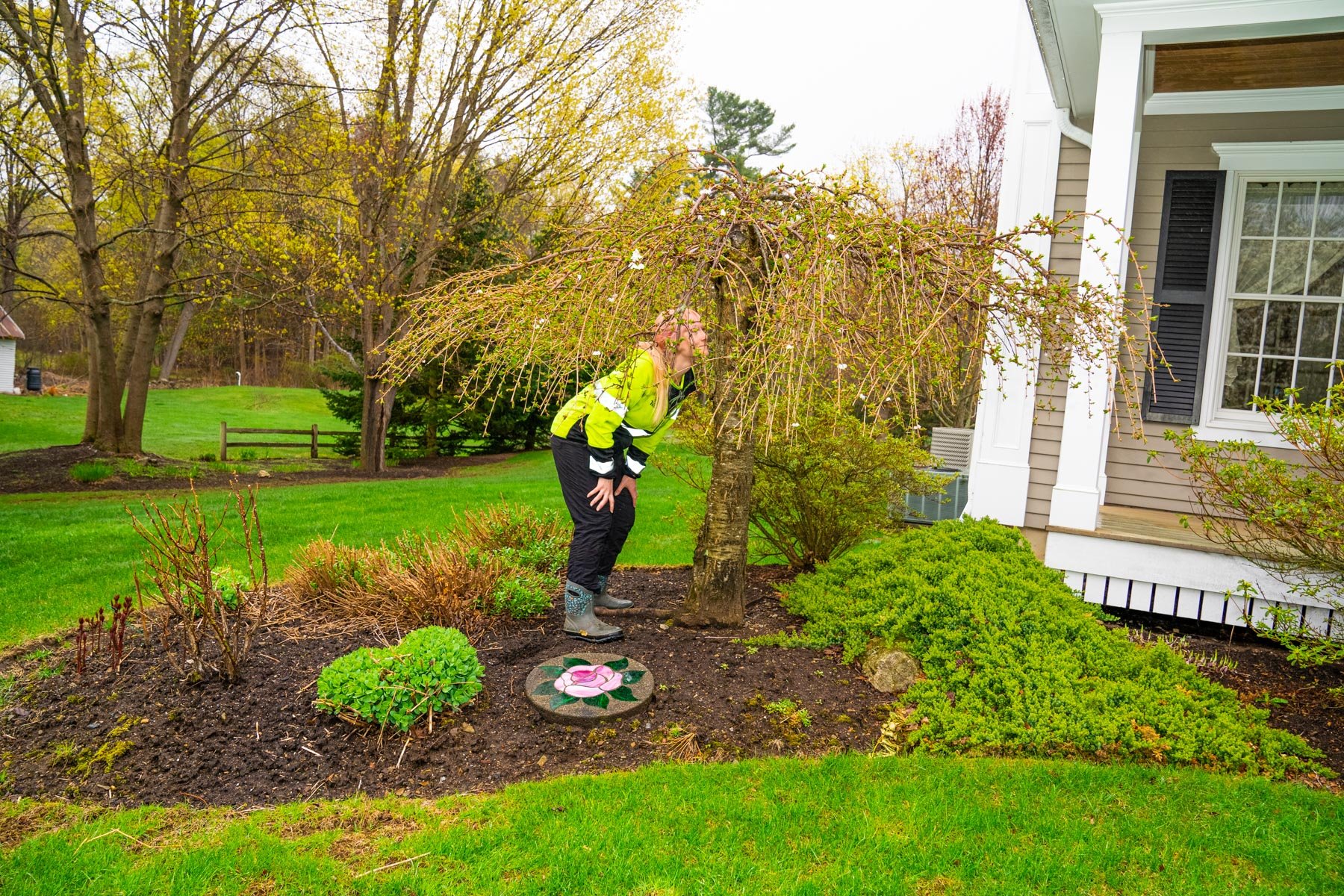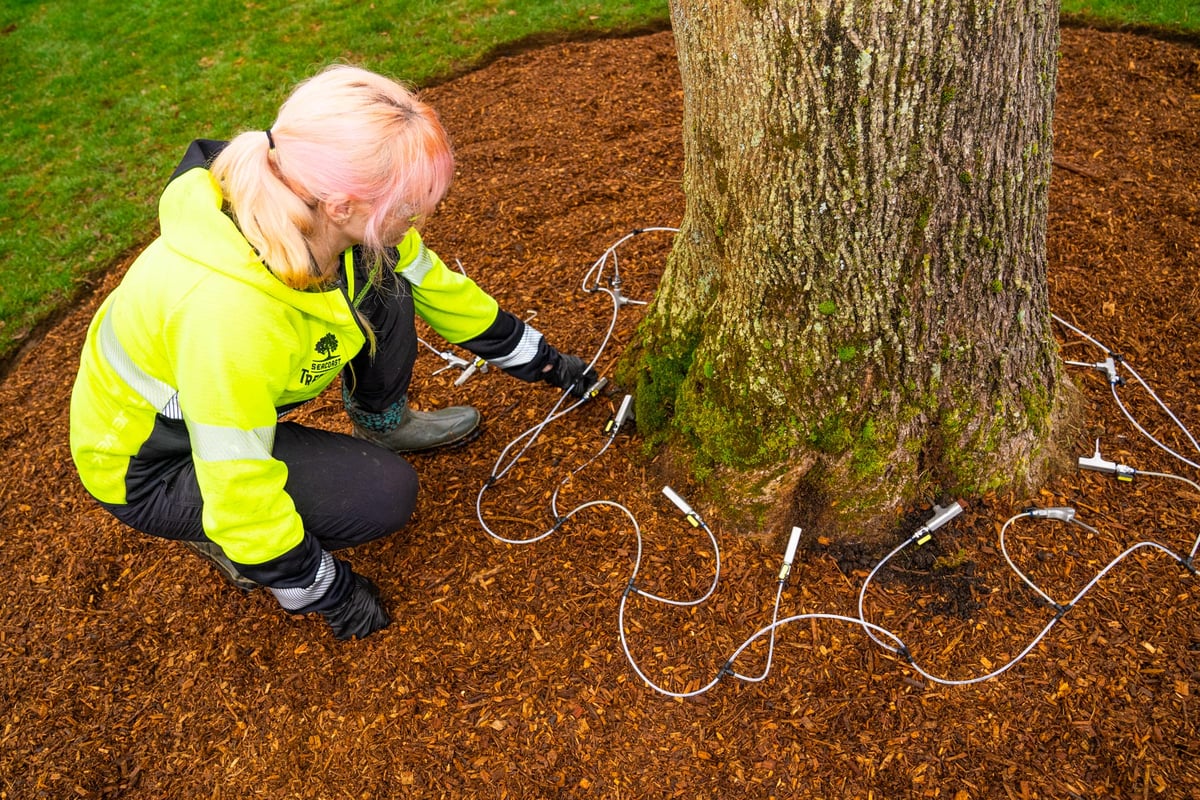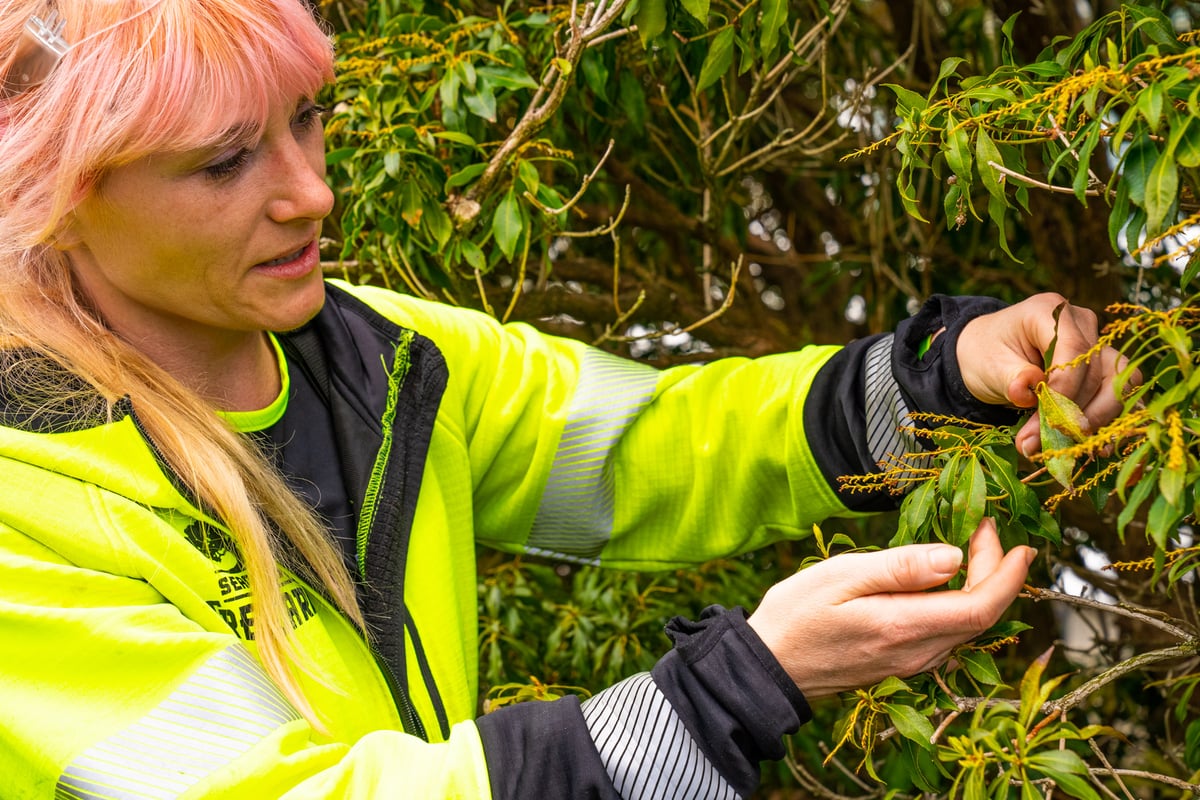
Newly Planted Tree Care: 4 Tips to Ensure Healthy Growth
If you’re installing new trees at your New England property, you want to make sure that you’re doing all the right things to help them become established and grow healthy and strong.
It’s important to set new trees up for success with newly planted tree care. Those first few weeks and months of your new tree’s life are critical. In order for your tree to become established, it needs a little bit of “TLC” in this early stage.
In this guide, we’ll dive into how to take care of a newly planted tree. We want to help set you up for long-term success with the proper care right now.
Learn more about each newly planted tree care tip.
1. Keep the root ball moist
2. Add a mulch ring (but not a volcano!)
3. Use light pruning for defects only
4. Implement a plant health care program for future care
Let’s dive into more specifics on how to take care of a newly planted tree.
How to Care for Newly Planted Trees
The first few weeks and months of your new tree’s life on your New England property is a critical stage.
Keep in mind that proper planting is also critical.
You’ll want to ensure that your trees are installed at a proper depth and in a location best-suited to their needs. A common mistake made when planting trees is not considering the full growth of the tree. It’s important that it’s installed somewhere that the future root system and canopy will not cause problems.

Once your tree has been properly installed, you can begin to care for it.
Here are four steps that we’d suggest taking with your newly planted trees. Your actions now will help get your trees set up for long-term success.
1. Keep the Root Ball Moist
One of the first things that homeowners want to know is how often to water newly planted trees. The goal of watering should be to keep the root ball moist. You can most likely achieve this by watering every other day during the first couple of weeks that your tree is planted.
The goal whenever watering a tree is to water deeply. Imagine a soaking rain. You want the water to get deep into the soil.

We like the idea of a soaker hose for watering trees as it supplies the water slowly and steadily. There are also slow-release watering bags that can help supply steady water to a newly planted tree.
Whenever watering a tree, you should also take rainfall into account. If your tree is already getting good watering from Mother Nature, you might be able to back off on your supplemental supply.
Avoid overwatering as this can also be harmful. If the water is pooling around the tree or the ground seems soggy, you might be watering too much.
After the first couple of weeks, you can likely back down to watering once or twice a week during the tree’s first year.
2. Add a Mulch Ring (But Not a Volcano!)
One of the biggest mistakes made with newly planted tree care is improper mulching. That’s because it’s become a common practice (even though it’s wrong) to pile mulch up like a volcano around a tree. These mulch volcanoes can end up causing a lot of harm.
When you pile mulch up against a tree trunk it can encourage disease and decay because it does not allow the trunk to get air (and to dry out as it needs to). This can lead to a moist and unhealthy environment.

Mulch volcanoes can also lead to oxygen deprivation for the tree’s roots. Trees might respond by growing new roots in the mulch (instead of deep down in the ground, where they are supposed to be growing). This can lead to a condition called “girdling roots” which can eventually strangle the tree.
Mulch volcanoes can ultimately lead to the need for a restoration service called root collar excavation.
The proper way to mulch around a tree is to create a “donut” shape with the tree trunk at the center of the donut.
You also want to avoid over-mulching. Mulch has a lot of benefits for your tree including water retention, temperature regulation, and even the addition of nutrients to the soil (as mulch breaks down). But too much mulch can leave the soil soggy and waterlogged. It can also prevent mulch from breaking down the way it’s supposed to over time.
3. Use Light Pruning for Defects Only
In time, tree pruning will be one of the most important ways that you care for your tree. But with newly planted trees, only light pruning is needed for those branches that might be defective.
Heavily pruning a newly planted tree is going to put a tremendous amount of stress on it and could lead to its demise.
Typically, you’ll want to get on a pruning schedule with a tree after it’s become established. Often this is after the first year but the exact timing depends on the species of the tree.

Future pruning should involve removing diseased, dying, or defective branches to improve the overall health of the tree.
Pruning can also be done for structure and shape. There are various pruning methods for established trees including crown cleaning, crown thinning, crown raising, and crown reduction. A tree care professional will help you determine what your tree might need.
4. Implement a Plant Health Care Program for Future Care
When talking about how to take care of a newly planted tree, homeowners also want to know when to begin plant health care services like tree fertilization.
This is something else that typically starts once the tree is a bit more established (which again depends on the tree species).
Plant health care services include fertilization along with disease and pest control measures. Young trees can still be subject to problems like diseases and pests, so it is worth talking to a tree care professional about when it makes sense to start these services.
Choosing Tree Care in Southern NH, Northeastern Massachusetts, and Southern Maine
Caring for trees can involve a tremendous amount of know-how and expertise, particularly as they become established. For that reason, you’ll likely want to partner with a tree care company that can help you make the best choices for your New England property.
There are plenty of companies offering tree care in Southern NH, Northeastern Massachusetts, and Southern Maine. But it’s important to be selective and find a company that you feel is best-qualified to meet your needs.
When you make a wise choice in tree care companies, you can let go of the worries associated with taking care of trees and simply get back to enjoying them for all of the benefits they have to offer.
At Seacoast Tree Care, we’re committed to preserving the health and beauty of trees in New Hampshire, Maine, and Massachusetts by performing vital services like tree pruning, tree removal, and general tree care the right way.
We’re also here to offer helpful tree care tips so that you can be well-educated on what your trees need. That includes guiding you through those early stages of how to care for newly planted trees. We want to help set you up for success so you can enjoy those new trees for many years to come.
Ready for safer and healthier trees at your New Hampshire, Maine, or Massachusetts home? Request your consultation and get a free quote. We service properties in and around Stratham, NH, Kittery, ME, and Haverhill, MA. By making a wise choice, you’ll know your trees are in good hands.
Image Source: hose


